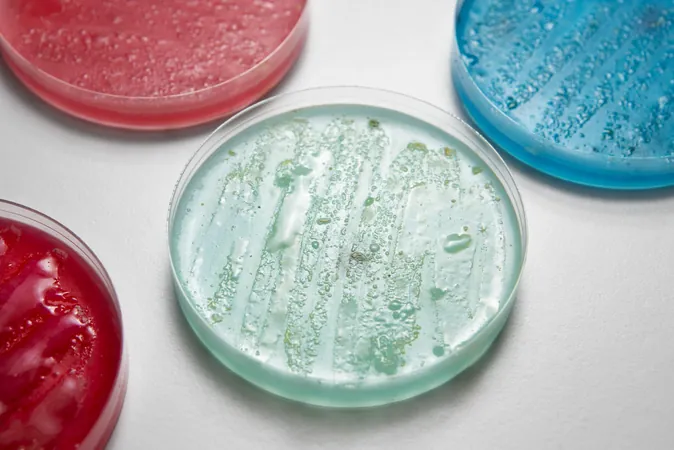
Revolutionizing Biomedical Research: The Thrilling Future of 3D Cell Cultures
2024-12-30
Author: Charlotte
Introduction
For over a century, the realm of biomedical research has relied heavily on studying how cells grow and develop. Scientists have meticulously cultivated plant and animal cells in laboratory settings—using tools like petri dishes, glass plates, and various nutrient media—to create cell cultures. This careful maintenance has been pivotal for medical research, leading to groundbreaking advances in drug and vaccine development for devastating diseases, including cancer.
The Shift to 3D Cell Cultures
However, a paradigm shift is upon us. Traditionally, most cell cultures are grown in a 2-dimensional format, where cells are confined to a flat surface. This 2D setup severely restricts the growth patterns and natural behaviors of the cells, thereby compromising the accuracy of experimental results. To tackle these limitations, researchers have pioneered an innovative approach: the creation of 3-dimensional (3D) cell cultures.
Imagine a world where cells can grow in all dimensions, similar to their natural habitats within our bodies. This is the essence of 3D cell cultures, which are cultivated in spherical plates, hydrogels, or bioreactors. These systems afford cells a more life-like environment, allowing them to mature, interact, and organize into complex structures that closely resemble actual organ tissues. This new methodology is transforming the landscape of biomedical research, creating opportunities for more accurate modeling of biological processes and disease mechanisms.
Applications and Advantages of 3D Cultures
A recent groundbreaking study explored the state of 3D cell culture technology and its integration into microbiology. Researchers discovered that these advanced cultures are effectively utilized in vaccine development, tumor modeling, and the formulation of personalized cancer treatments. Unlike their 2D predecessors, 3D cultures enable cells to interact with their surroundings in ways that more authentically replicate human tissues, significantly enhancing the reliability of treatment and drug evaluations.
Challenges in Adoption
Yet, the rise of 3D cell cultures isn't without challenges. A major drawback identified in the study is cost; establishing a 3D culture can be two to ten times more expensive than traditional 2D systems. The technical complexity involved in designing and maintaining these systems further complicates widespread adoption across labs. Consequently, many biomedical researchers have been slow to transition to this innovative technique.
Future Implications
The implications of this delayed adoption are concerning. Researchers who develop these sophisticated methods may struggle to find qualified peer reviewers and colleagues capable of replicating their results, potentially stymieing progress in the field. Nonetheless, 3D cell cultures hold immense promise. They have the potential to reduce reliance on animal models, accelerate drug development timelines, and lead to the emergence of safer and more effective treatments.
Conclusion
While the road ahead may be fraught with challenges like high costs and technical barriers, the scientific community is being urged to overcome these obstacles. Future researchers are encouraged to embrace 3D cell cultures to revolutionize the landscape of medicine—particularly in fields like regenerative medicine and personalized cancer therapies. By improving the efficiency and accessibility of 3D cultivation techniques, we could unlock transformational pathways in understanding diseases and honing therapeutic interventions.
In conclusion, as we embark on this exciting journey, one thing is clear: the future of biomedical research is not just 2D; it’s a dynamic, complex, and thrilling 3D adventure! Are you ready to see how this will change the world of medicine forever?









 Brasil (PT)
Brasil (PT)
 Canada (EN)
Canada (EN)
 Chile (ES)
Chile (ES)
 Česko (CS)
Česko (CS)
 대한민국 (KO)
대한민국 (KO)
 España (ES)
España (ES)
 France (FR)
France (FR)
 Hong Kong (EN)
Hong Kong (EN)
 Italia (IT)
Italia (IT)
 日本 (JA)
日本 (JA)
 Magyarország (HU)
Magyarország (HU)
 Norge (NO)
Norge (NO)
 Polska (PL)
Polska (PL)
 Schweiz (DE)
Schweiz (DE)
 Singapore (EN)
Singapore (EN)
 Sverige (SV)
Sverige (SV)
 Suomi (FI)
Suomi (FI)
 Türkiye (TR)
Türkiye (TR)
 الإمارات العربية المتحدة (AR)
الإمارات العربية المتحدة (AR)